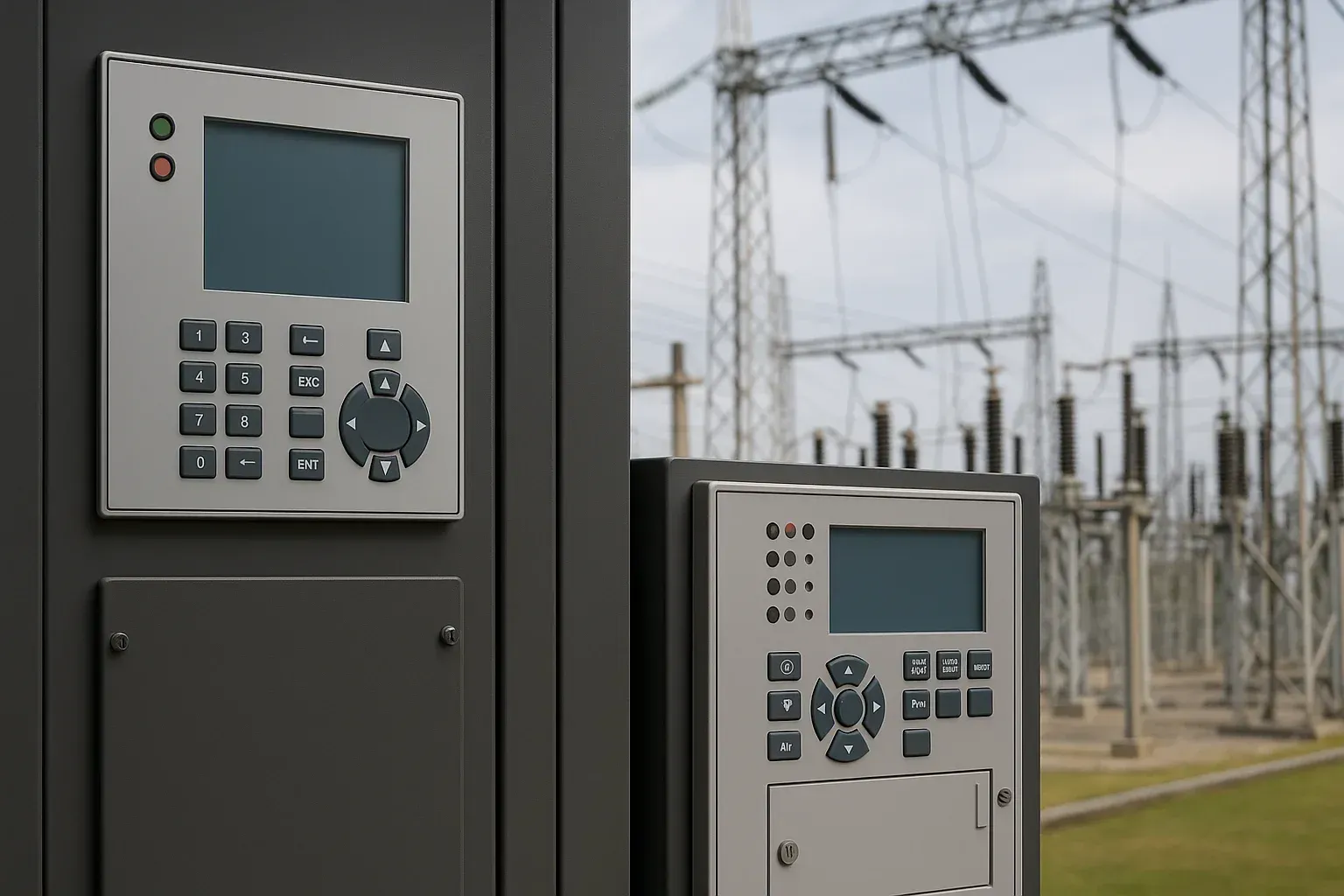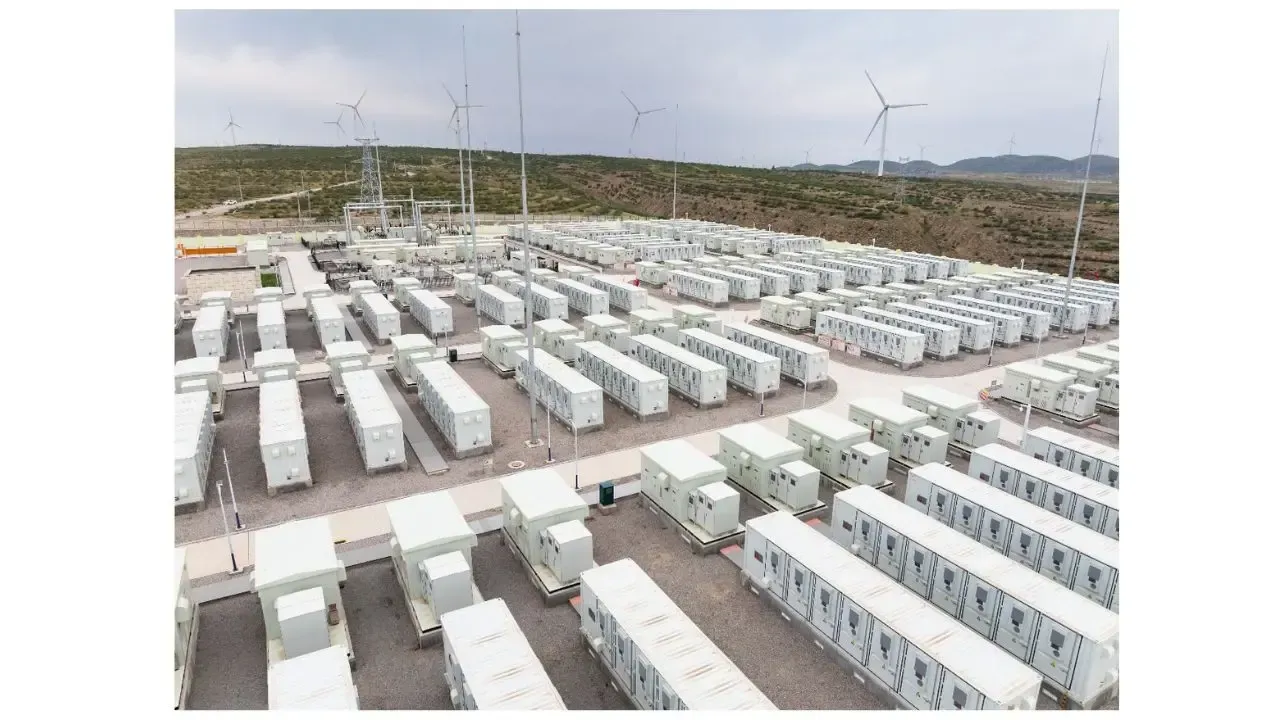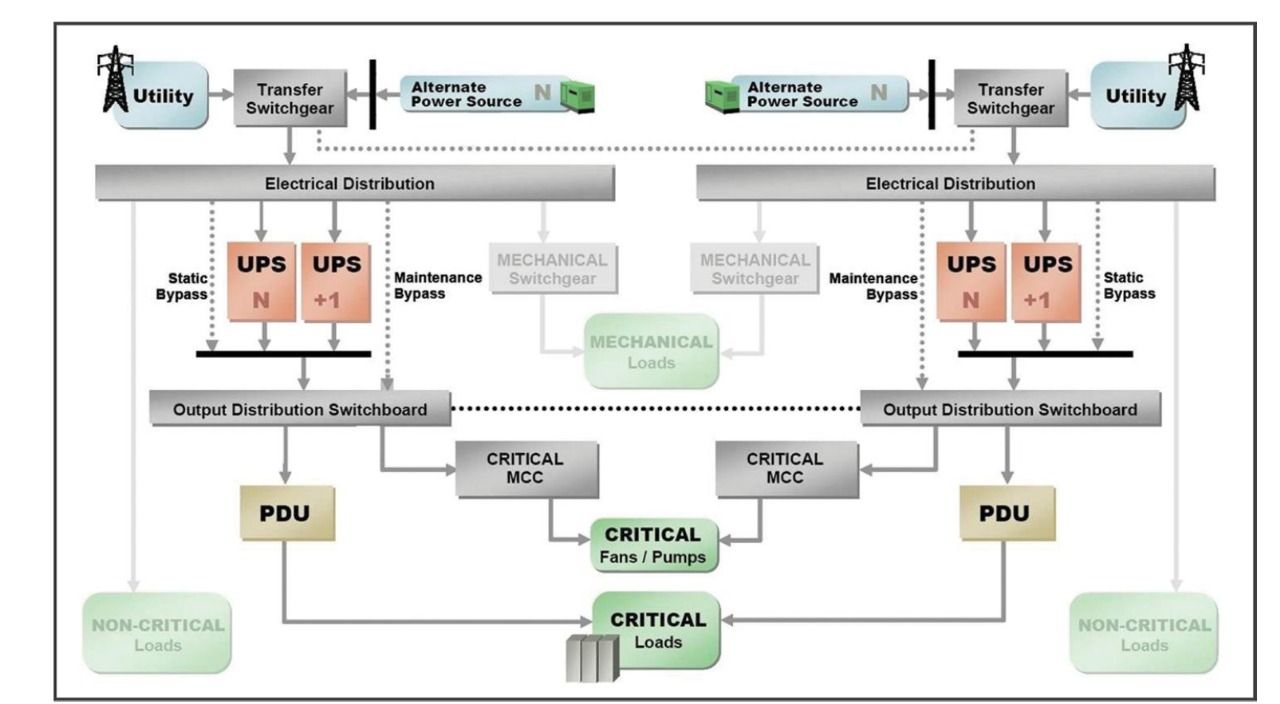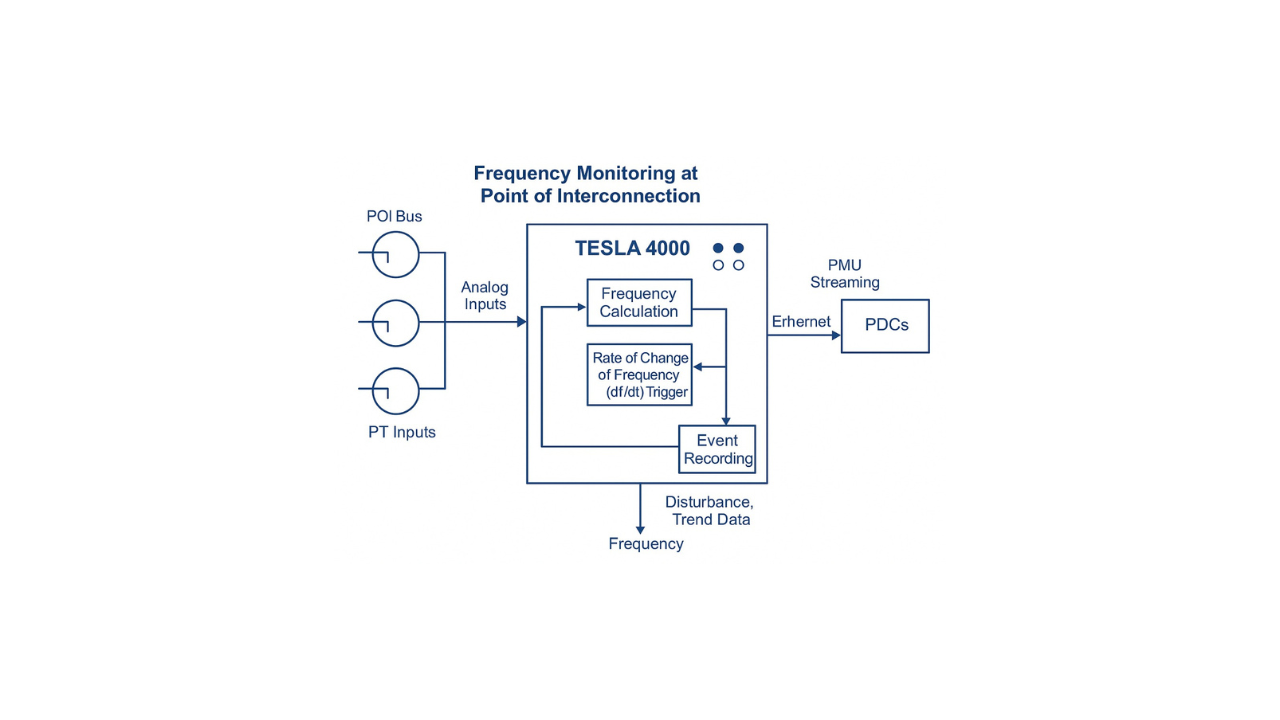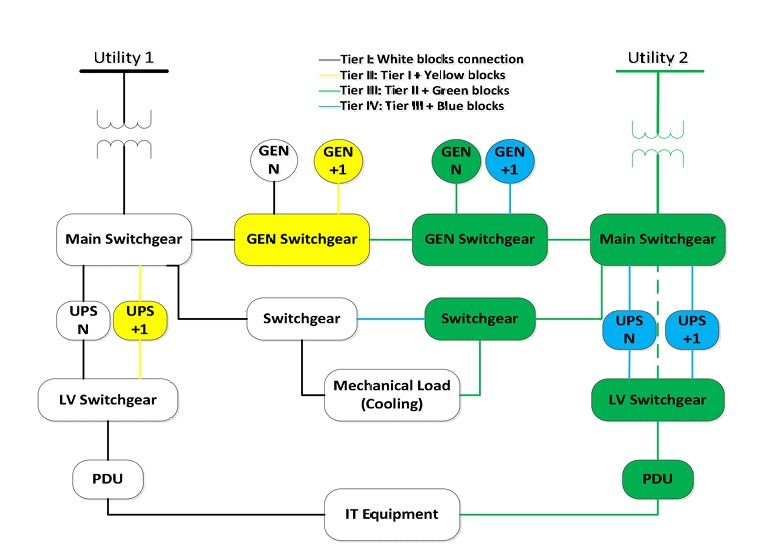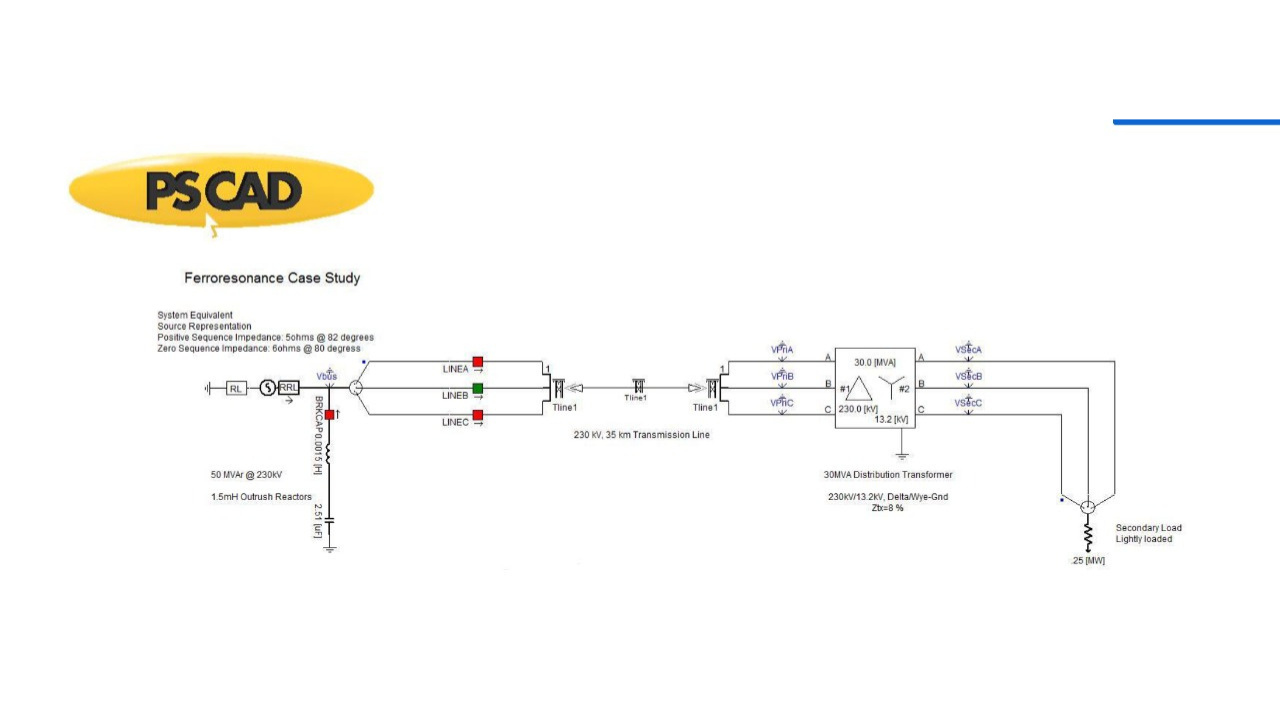A Coordinated Electric System Interconnection Review—the utility’s deep-dive on technical and cost impacts of your project.
Challenge: Frequent false tripping using conventional electromechanical relays
Solution: SEL-487E integration with multi-terminal differential protection and dynamic inrush restraint
Result: 90% reduction in false trips, saving over $250,000 in downtime
Understanding ISO-NE’s DDMS: A Technical Guide to Dynamic Modeling & Model Lifecycle
November 25, 2025 | Blog
Accurate and validated dynamic models are essential for reliable power system planning and operational decision-making across the ISO-NE region. As inverter-based resources (IBRs) continue to grow and the grid transitions toward more complex, fast-acting dynamics, the need for high-fidelity transient stability models has become critical. ISO New England addresses this requirement through its Dynamics Data Management System (DDMS)—a structured, secure platform used to collect, validate, correct, approve, and manage the full lifecycle of dynamic stability models.
DDMS serves as the central system through which all generator owners, transmission operators, consultants, and project developers must submit and maintain models required for transient stability simulations. These include machine models, excitation systems, governor controls, PSS models, and inverter-based resource models that must be accurate to remain compliant with regional and NERC modeling standards.
This technical guide provides a clear, engineering-focused overview of DDMS—covering its purpose, workflow, approval process, required file formats, submission responsibilities, and its relationship to NERC
MOD-032,
MOD-026, and
MOD-027. It is written for power system engineers, transmission planners, consultants, and generator owners who need a practical understanding of how DDMS supports model accuracy, model governance, and ISO-NE stability case development.
Introduction: Why DDMS Matters
ISO-NE requires high-quality dynamic models for all generators, synchronous condensers, static VAR compensators (SVCs), HVDC converters, FACTS devices, and other dynamic grid components that influence transient stability and system reliability. The Dynamics Data Management System (DDMS) provides a controlled, standardized environment to store, validate, and manage these models across the ISO-NE region.
Through DDMS, ISO-NE ensures:
- Centralized and secure storage of dynamic model data for transient stability simulations
- Version control and traceability, allowing engineers to track parameter changes and equipment updates
- A structured submission and review workflow aligned with ISO-NE’s modeling requirements
- Compliance with NERC MOD-032, MOD-026, and MOD-027 standards, ensuring validated and accurate models. See our NERC Compliance Services.
- Annual recertification to maintain long-term model accuracy as equipment ages or control settings change
- A transparent, auditable lifecycle from draft creation to final approval
ISO-NE’s official PSS®E stability cases, used for operational planning, interconnection studies, and reliability assessments, are populated exclusively with approved and system-modeled DDMS submissions. This means no dynamic model can enter ISO-NE master stability cases unless it successfully passes through the DDMS workflow.
Purpose and Scope of DDMS
According to ISO-NE’s official User Guide, the Dynamics Data Management System (DDMS) functions as the central repository for all dynamic stability models required for ISO-NE planning and operational transient stability studies. The platform securely manages and validates the full range of dynamic model data needed for accurate simulation in tools such as PSS®E.
DDMS supports submission, tracking, and lifecycle management of the following model categories:
- Synchronous machine models
- Excitation systems
- Governor models
- Power System Stabilizers (PSS models)
- HVDC converter dynamic models
- FACTS device models
- User-defined model DLLs or FLX files
- Supporting test, tuning, and validation documentation (e.g., MOD-026 & MOD-027 evidence)
These files and parameters directly feed into ISO-NE’s transient stability simulation cases, ensuring that generator owners and project developers maintain compliance with NERC MOD-032 data submission requirements.
DDMS does not store steady-state modeling parameters. The following datasets must be provided through ISO-NE’s separate steady-state data systems:
- NX-9 transmission line impedances
- NX-12 transformer parameters
- Real/reactive capability curves
These steady-state elements typically form part of broader power system studies.
When Model Submissions Are Required
ISO-NE requires updated dynamic model submissions through the DDMS platform at several key project milestones to maintain accuracy in transient stability simulations and ensure compliance with NERC MOD-032, MOD-026, and MOD-027.
1. New Generation or ETU (Elective Transmission Upgrade) Projects
A DDMS submission is required after the System Impact Study (SIS) is completed and formally presented. The assigned ISO-NE Technical Lead will notify the Lead Market Participant when the modeling package is due.
2. All Other New Equipment
A submission is required once the Proposed Plan Application (PPA) is approved by the NEPOOL Reliability Committee, ensuring the new asset can be accurately represented in ISO-NE’s stability cases.
3. Existing Equipment
A new or updated model must be submitted when any of the following occurs:
- Model parameters are corrected or updated
- Physical equipment (generator, inverter, controls) is modified
- Plant-level or unit-level control settings change
- A more accurate or validated model becomes available
- ISO-NE identifies deficiencies during technical review
- The existing model becomes obsolete or no longer reflects as-built performance
In addition, annual model recertification is required for all equipment to maintain continuous compliance with ISO-NE processes and NERC modeling standards.
Overview of the DDMS Process
DDMS manages the complete lifecycle of a dynamic model from initial draft creation through final approval and inclusion in ISO-NE’s transient stability libraries. The structured workflow consists of:
- Draft creation by the Lead Market Participant
- Submission and certification
- ISO-NE assignment to a Technical Lead
- Technical review of parameters and model behavior
- Iterative corrections, when required
- Formal approval
- System modeling, where the approved model is added to ISO-NE stability cases
- Annual recertification to maintain ongoing accuracy
DDMS uses standardized status codes to ensure transparency and full traceability:
- Draft – Initial stage; not visible to ISO-NE analysts
- Submitted – Certified by the Lead Market Participant
- Pending Review – Assigned to an ISO Technical Lead
- ISO Review – Verification of parameters and simulation accuracy
- Correction Required – ISO-NE requests updates; submitter uses “Resubmit & Recertify”
- Correction Submitted – Corrections provided and under re-evaluation
- Approved Pending System Model – Approved but not yet inserted into master stability cases
- Approved & System Modeled – Fully accepted and included in ISO-NE stability libraries
- Approved & Modeled Pending Recertification – Approved, awaiting annual recertification
- Terminated / Rejected / Superseded – For canceled, obsolete, or replaced models
These DDMS status codes provide a consistent, auditable framework for model governance across the ISO-NE footprint.
See More About:
Power System Modeling Services
Access, User Roles, and Security
DDMS access is managed through ISO-NE’s CAMS (Customer and Asset Management System), ensuring controlled and secure handling of all dynamic model data. Users can gain access through two pathways:
Market Participants
Their Security Administrators assign the DDMS Compliance Officer role directly within CAMS.
Non-Market Participants
Project developers request access through ISO-NE’s “Ask ISO” portal to participate in model submission or NERC MOD-related processes.
Creating and Editing a Draft Submission
Once logged in, engineers can create new dynamic model records in DDMS using the Create Issue function. Each draft entry must include the following required fields to support ISO-NE’s dynamic modeling and transient stability requirements:
Key Data Elements
- Summary and Description
- Submission Reason (e.g., New, Data Correction, As-Built/Tested)
- Equipment Name
- Equipment Type
- Effective Model Start/End Dates
- Whether User-Defined Models are included
- Applicable PSS®E version information
Engineers must upload all relevant model files to ensure a complete and accurate submission, including:
- .RAW files for steady-state data
- .DYR files for dynamic model parameters
- User-defined DLLs or FLX files when applicable
- Supporting documentation such as factory test reports, tuning reports, and MOD-026/027 validation evidence
DDMS automatically applies validation rules to maintain data quality, consistency, and compliance with ISO-NE modeling standards. Draft submissions remain editable and may be updated as needed before final certification.
For engineering teams seeking support with preparing or validating RAW/DYR files, see Power System Modeling Services.
Submitting and Certifying the Model
Certification is required before ISO-NE will begin its technical review within the Dynamics Data Management System (DDMS). The Lead Market Participant must formally attest that:
- The dynamic model data is accurate and reflects the actual equipment configuration.
- All required attachments—including RAW, DYR, and supporting documentation—have been uploaded.
- All parameters have been validated against commissioning data, system tests, and applicable NERC MOD-026/027 requirements.
Additional required fields include:
- Certification = Yes
- Original Certification Date
Once these steps are completed, the model automatically transitions from Draft to Submitted, allowing ISO-NE to assign it to a Technical Lead for review.
ISO-NE Review and Correction Cycles
Once a model submission enters the ISO-NE review pipeline, the engineering team evaluates it for several key criteria to ensure dynamic model accuracy, compliance with NERC MOD standards, and proper integration into the regional PSS®E transient stability cases.
1. Parameter Validity
ISO-NE performs reasonableness checks using engineering judgment, historical data, and expected parameter ranges to confirm that all dynamic model values are technically sound.
2. Compatibility
The submitted model is reviewed for compatibility with:
- Existing PSS®E v33 dynamic model libraries
- Other units within the same facility
- Associated control systems, auxiliary equipment, and protection schemes
This prevents conflicts that may impact stability studies or IBR performance evaluations.
3. Behavioral Simulations
ISO-NE conducts simulation checks, including:
- AVR and governor step response performance
- PSS dynamic behavior
- Fault, clearing, and post-fault recovery behavior
These simulations verify whether the model behaves consistently with expected machine or inverter performance.
If any issues are identified, the model moves to Correction Required status.
The submitter must then:
- Review ISO-NE’s technical comments
- Update parameters, files, or documentation
- Re-upload corrected attachments
- Complete Resubmit & Recertify to re-enter the review cycle
The process repeats until the submission fully satisfies ISO-NE requirements and is ready for inclusion in regional stability cases used in planning and operational studies.
Annual Model Recertification
ISO-NE and NERC standards require periodic recertification to maintain dynamic model accuracy for transient stability studies. The DDMS platform enforces an annual recertification cycle to ensure each approved dynamic model continues to meet ISO-NE and NERC MOD-026 / MOD-027 compliance requirements.
When recertification is triggered:
- ISO-NE sends notifications to all associated users.
- The submitter must review all model information for accuracy.
- If the data is still valid, they select Recertify.
- If any information is outdated, they must Decline to Recertify and immediately submit a revised model.
Annual recertification ensures that updates in:
- Control tuning
- Firmware or logic changes
- Plant upgrades
- Wear-related performance drift
- Replacement of excitation or governor components
are correctly reflected in ISO-NE’s approved dynamic models. This process helps maintain accurate PSS®E stability case modeling across the region.
Terminating a Submission
A DDMS submission may be terminated when a project is cancelled or when a draft contains issues that cannot be corrected efficiently. The Lead Market Participant can terminate a Draft, Submitted, or Correction Required model.
An explanation must be provided, after which the submission is marked Terminated, ensuring clear lifecycle tracking within ISO-NE’s Dynamics Data Management System.
Technical Requirements for Model File Formats
DDMS submissions must include all required transient stability model files compatible with PSS®E Version 33, ensuring consistency across ISO-NE dynamic simulations and NERC MOD-032/026/027 data requirements.
1. RAW File Format
The RAW file provides essential steady-state parameters for transient stability modeling, including:
- Machine ratings
- Bus connections
- Voltage setpoints
- GSU transformer references
- Status flags
To maintain accuracy, engineers must ensure:
- Correct six-digit ISO-NE bus numbers
- Proper MVA base selection
- Accurate generator dispatch values
- Consistency with NX-9 steady-state equipment data
RAW files may be generated:
- From existing DDMS-approved models
- Directly within PSS®E
- Through internal equipment or EMS/SCADA databases
Only necessary steady-state parameters are included in DDMS; most full network data resides outside DDMS.
For additional reference on steady-state studies:
Load Flow Studies in Electrical Power Systems.
2. DYR File Format
The DYR file contains all dynamic stability model definitions required for ISO-NE’s transient stability studies. This includes:
- Machine models (e.g., GENROU, GENCLS)
- Excitation system models (IEEE and vendor-specific)
- Governor and turbine control models (TGOV series)
- Power System Stabilizer (PSS) models
- HVDC dynamic controls
- FACTS device controllers
Each DYR entry must follow the standard PSS®E format: BusNumber ‘ModelName’ MachineID ParameterList /
To ensure a valid DDMS submission, engineers must verify that:
- The bus ID matches the correct ISO-NE 6-digit bus number
- The unit ID is consistent with the associated generator or device
- Parameters follow the correct order and formatting
- The model type is fully compatible with PSS®E Version 33, as required by ISO-NE
- Minor spacing or decimal formatting variations are acceptable and do not affect model execution
For reference, engineers using models for renewable resources, BESS, or HVDC systems may cross-check model expectations with related resources such as our Power System Studies page.
3. User-Defined Models
When standard PSS®E dynamic model libraries cannot represent a device, a user-defined model is required. DDMS supports the following file types:
- DLL binary files (preferred for ISO-NE compatibility)
- FLX source code files (accepted in limited cases)
However, ISO-NE specifies that:
- User-defined models are not accepted for generators whose SIS process began after January 1, 2017.
- Standard PSS®E models must be used whenever they are available and technically appropriate.
- All user-defined models must still include matching RAW and DYR files to ensure consistency across dynamic stability simulations.
For teams working with advanced inverter-based resources or complex dynamic controls, you may also review our
Power System Modeling Services for support on PSS®E, PSCAD, and EMT-level modeling.
4. Supporting Documentation
Engineers must include all supporting documentation required for ISO-NE dynamic model verification to ensure accurate DDMS submissions. This documentation helps validate parameters and confirm compliance with NERC MOD-026, MOD-027, and ISO-NE modeling requirements. Required documents include:
- Factory test reports
- Excitation and governor tuning results
- MOD-026 and MOD-027 model validation evidence
- As-purchased and as-built equipment data sheets
- Detailed model validation reports supporting PSS®E compatibility
This documentation enables ISO-NE to cross-verify model accuracy against physical equipment characteristics and ensures the final dynamic model integrates correctly into regional transient stability studies.
Best Practices for High-Quality DDMS Submissions
To ensure smooth approval through ISO-NE’s Dynamics Data Management System (DDMS) and maintain compliance with NERC MOD-026, MOD-027, and MOD-032, engineers should follow these core best practices:
1. Validate Before Submission
Use PSS®E dynamic simulations to confirm:
- Reasonable AVR response
- Accurate governor droop and response behavior
- No numerical instability
- Model parameters properly aligned with commissioning and test data
2. Use Accurate ISO-NE Bus Numbers
Incorrect or outdated bus IDs remain one of the most common causes of DDMS rejections. Verify all six-digit ISO-NE bus assignments before attaching model files.
3. Include All Required Attachments
Ensure the RAW file, DYR file, and all supporting documentation are uploaded. Missing attachments frequently trigger Correction Required status.
4. Avoid User-Defined Models Unless Necessary
ISO-NE expects engineers to use standard PSS®E models when available. Only apply user-defined DLL/FLX models when no acceptable standard model exists.
5. Maintain Local Version Control
Track as-purchased, as-built, and as-tested model configurations internally. This helps maintain compliance and supports future recertification audits.
6. Recertify Promptly
Timely recertification ensures stability cases remain accurate and compliant with NERC modeling standards.
Engineering Value of DDMS
DDMS enhances system reliability across the ISO-NE footprint by ensuring:
- High-fidelity transient stability cases
- A logical, traceable workflow for dynamic model tracking
- Strong alignment with NERC MOD-032, MOD-026, and MOD-027 requirements
- Full transparency across the entire model lifecycle
- Accurate representation of actual New England grid behavior
Reliable and validated dynamic models are essential for:
- Voltage stability studies
- Transient stability simulations
- Frequency response analyses
- System planning and operational decision-making
By enforcing consistent data quality and lifecycle governance, DDMS ensures that ISO-NE’s dynamic models remain accurate, validated, and up-to-date for regional engineering studies.
Technical FAQ: DDMS for Power System Engineers
1. What is DDMS used for?
DDMS stores and manages dynamic stability models for generators, HVDC links, FACTS devices, and reactive resources used in ISO-NE transient stability simulations.
2. Which NERC standards relate to DDMS?
- MOD-032 – Data submission
- MOD-026 – Excitation system validation
- MOD-027 – Governor model validation
3. Does DDMS handle steady-state data?
No. Steady-state network parameters (NX-9, NX-12) are stored in other ISO-NE data systems.
4. When should a new model be submitted?
After SIS completion for new units, after PPA approval, or when any model parameters or equipment characteristics change.
5. What distinguishes a Draft from a Submitted model?
Draft models are editable and not certified. Submitted models are certified and ready for ISO-NE review.
6. What triggers a Correction Required status?
Missing data, invalid parameters, inconsistencies with existing models, or simulation performance issues.
7. What must be recertified annually?
All approved models require annual recertification to ensure ongoing accuracy.
8. What happens if a model cannot be recertified?
The user must select Decline to Recertify and submit a replacement model.
9. What file formats does DDMS accept?
- RAW (steady-state data)
- DYR (dynamic parameters)
- DLL/FLX (user-defined models)
10. Can I use user-defined models?
Yes, but they are discouraged and not allowed for new FERC-jurisdictional generators with SIS post-2017.
11. What PSS®E version must models support?
Models must be compatible with PSS®E v33.
12. How do I find correct bus numbers?
Ask your ISO Technical Lead or reference existing DDMS models.
13. Can I clone a submission in DDMS?
Yes, but ISO-NE does not recommend using this feature.
14. What is “Approved Pending System Model”?
ISO-NE approved the model, but it has not yet been inserted into master stability cases.
15. What happens if my model is superseded?
It is replaced by a more accurate version and no longer used.
16. What limitations exist for attachments?
PDFs, RAW, DYR, DLL, and FLX are accepted. Files cannot be edited in DDMS
17. Does DDMS notify users of corrections?
Yes, via email and dashboard notifications.
18. Can terminated models be recovered?
No. A new submission must be created.
18. Can terminated models be recovered?
It depends on model complexity; DDMS does not enforce deadlines.
20. How detailed should supporting documentation be?
Include all model origin details: commissioning tests, parameter sources, and tuning procedures.
21. Are recertified models re-reviewed by ISO-NE?
Submit a MINo, unless data has changed or inaccuracies are suspected.
DAS Opt-Out Waiver.
Do multi-unit plants require separate submissions?
Yes. Each modeled unit typically requires its own DDMS entry unless ISO-NE specifically approves aggregation.
23. How are control parameter changes handled?
Submit a new model using the “Equipment Upgrade or Control Parameter Change” reason.
24. Can I view other participants’ models?
No. DDMS access is restricted per participant.
25. Are MOD-026 test results required for synchronous condensers?
Yes, if they include exciter systems requiring validation.
26. What if my model uses unsupported PSS®E models?
You must update it or provide user-defined equivalents where allowed.
27. Is a new submission required after firmware updates?
Yes, if firmware changes impact control behavior or performance.
28. Must collector system details be included for wind plants?
Only if such data are not present in existing ISO-NE systems.
29. What happens if attachments are missing?uestion
DDMS may accept the submission, but ISO-NE will move it to Correction Required.
30. Are test reports required for inverter-based resources?stion
Yes. Equivalent documentation to MOD-026/027 validation must be provided.
Related Resources for ISO-NE Modeling & NERC Compliance
Looking to strengthen your ISO-NE modeling workflows, improve dynamic model accuracy, or prepare for NERC MOD compliance? Explore our technical engineering resources and services:
Dynamic Modeling & Stability Analysis
NERC MOD Standards & Compliance
Contact us

About the Author:
Sonny Patel P.E. EC
IEEE Senior Member
In 1995, Sandip (Sonny) R. Patel earned his Electrical Engineering degree from the University of Illinois, specializing in Electrical Engineering . But degrees don’t build legacies—action does. For three decades, he’s been shaping the future of engineering, not just as a licensed Professional Engineer across multiple states (Florida, California, New York, West Virginia, and Minnesota), but as a doer. A builder. A leader. Not just an engineer. A Licensed Electrical Contractor in Florida with an Unlimited EC license. Not just an executive. The founder and CEO of KEENTEL LLC—where expertise meets execution. Three decades. Multiple states. Endless impact.
Services

Let's Discuss Your Project
Let's book a call to discuss your electrical engineering project that we can help you with.

About the Author:
Sonny Patel P.E. EC
IEEE Senior Member
In 1995, Sandip (Sonny) R. Patel earned his Electrical Engineering degree from the University of Illinois, specializing in Electrical Engineering . But degrees don’t build legacies—action does. For three decades, he’s been shaping the future of engineering, not just as a licensed Professional Engineer across multiple states (Florida, California, New York, West Virginia, and Minnesota), but as a doer. A builder. A leader. Not just an engineer. A Licensed Electrical Contractor in Florida with an Unlimited EC license. Not just an executive. The founder and CEO of KEENTEL LLC—where expertise meets execution. Three decades. Multiple states. Endless impact.
Leave a Comment
We will get back to you as soon as possible.
Please try again later.
Related Posts



